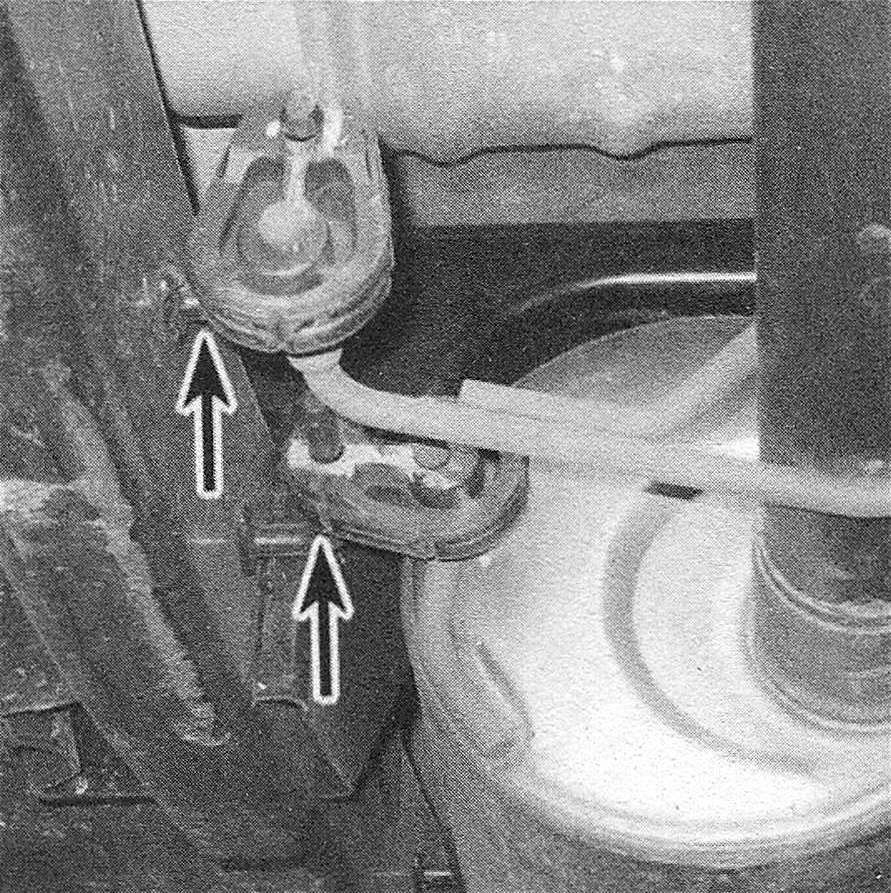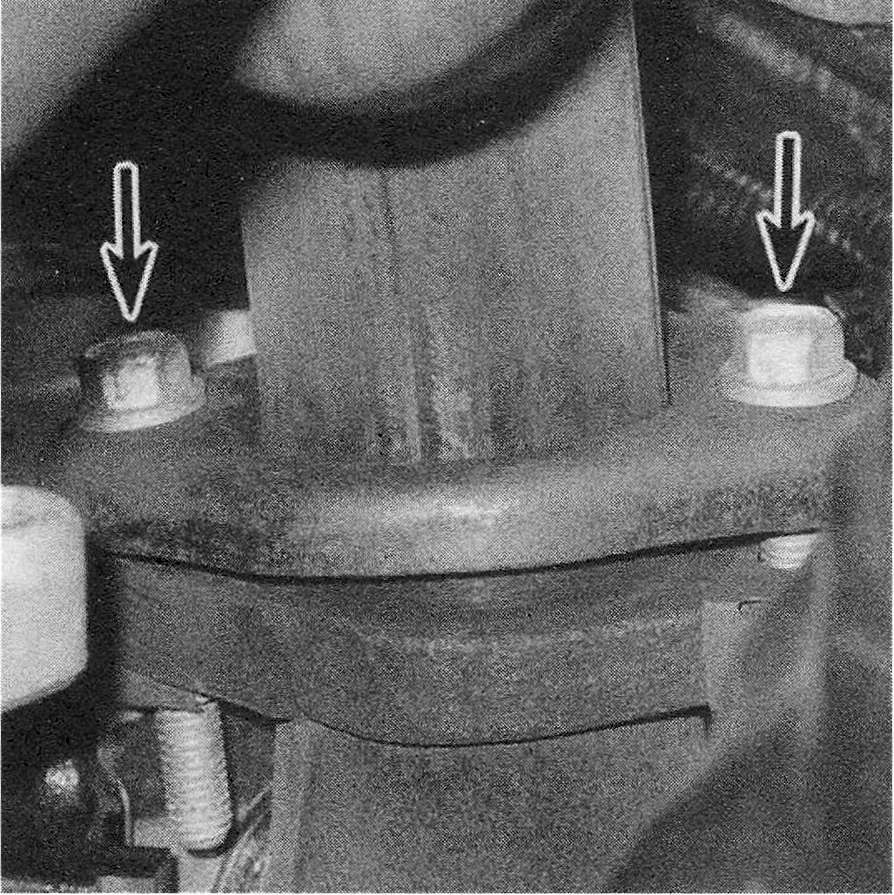Exhaust system servicing – general information
Warning: The vehicle’s exhaust system generates very high temperatures and must be allowed to cool down completely before touching any of the components. Be especially careful around the catalytic converter, which stays hot longer than other exhaust components.
1. The exhaust system consists of the exhaust manifolds, the exhaust pipes, the catalytic converter (s), an extension pipe (on some models), the muffler, the tailpipe, various exhaust heat shields and all connecting flanges and clamps. The exhaust system is isolated from the vehicle body and from chassis components by a series of rubber hangers (see illustration). Inspect these hangers periodically for cracks or other signs of deterioration, and replace them as necessary. Some exhaust components are also supported by brackets bolted to the underside of the vehicle. Make sure that these brackets are tightly fastened to the exhaust system and to the vehicle and that they’re neither cracked nor corroded.
13.1 Inspect the exhaust system rubber hangers for damage
2. Conduct regular inspections of the exhaust system to keep it safe and quiet. Look for any damaged or bent parts, open seams, holes, loose connections, excessive corrosion or other defects which could allow exhaust fumes to enter the vehicle. Do not repair deteriorated exhaust system components; replace them with new parts.
3. If the exhaust system components are extremely corroded, or rusted together, you’ll need welding equipment and a cutting torch to remove them. The convenient strategy at this point is to have a muffler repair shop remove the corroded sections with a cutting torch. If you want to save money by doing it yourself, but you don’t have a welding outfit and cutting torch, simply cut off the old components with a hacksaw. If you have compressed air, there are special pneumatic cutting chisels (available from specialty tool manufacturers) that can also be used. If you decide to tackle the job at home, wear safety goggles to protect your eyes from metal chips and wear work gloves to protect your hands.
4. Replacement of exhaust system components is basically a matter of removing the heat shields, disconnecting the component and installing a new one. The heat shields and exhaust system hangers must be reinstalled in the original locations or damage could result. Due to the high temperatures and exposed locations of the exhaust system components, rust and corrosion can seize parts together. Penetrating oils are available to help loosen frozen fasteners. However, in some cases it may be necessary to cut the pieces apart with a hacksaw or cutting torch. Caution: Only persons experienced in this work should employ this latter method. Here are some simple guidelines to follow when repairing the exhaust system:
a) Work from the back to the front when removing exhaust system components.
b) Apply penetrating oil to the exhaust system component fasteners (see illustration) to make them easier to remove.
c) While you’re waiting for the penetrant to loosen up the exhaust system fasteners, always disconnect the electrical connector for the downstream oxygen sensor and remove the sensor before removing the exhaust pipe section that includes the catalytic converter.
d) Use new gaskets, hangers and clamps when installing exhaust systems components.
e) Apply anti-seize compound to the threads of all exhaust system fasteners during reassembly.
f) Allow sufficient clearance between newly installed parts and all points on the underbody to avoid overheating the floor pan and possibly damaging the interior carpet and insulation. Pay particularly close attention to the catalytic converter and heat shield.
13.4 Exhaust manifold-to-exhaust pipe fasteners (shown) and exhaust pipe-to-catalytic converter fasteners can be extremely difficult to loosen because they’re subjected to intense heat, water, mud and road grime. If you’re unable to loosen a fastener, apply a liberal amount of penetrant, wait for it to soak in, then try again

